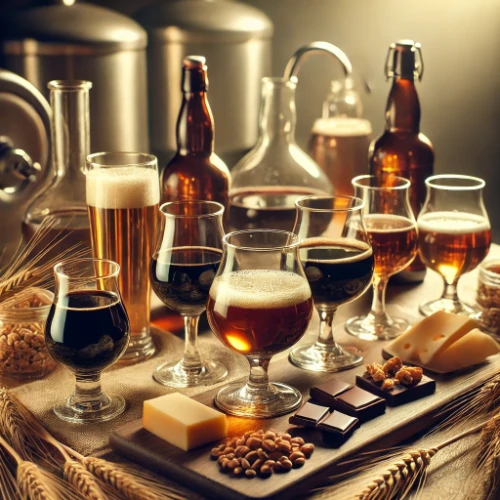How to Conduct a Non-Alcoholic Malt Tasting
Non-alcoholic malts offer a unique sensory experience that deserves to be appreciated with attention and care. Whether you are a beginner or an experienced enthusiast, this guide will help you improve your tasting skills and enjoy every sip of these delicious beverages.
Preparation for the Tasting
Before starting, it’s essential to prepare your environment and senses. Find a quiet place with good lighting and no strong odors that could interfere with your sensory experience.
Choosing the Right Glass
The glass you use can significantly influence the tasting experience. It is recommended to use a clear glass that allows you to observe the color and effervescence of the malt. A tulip-shaped glass or a wine glass is ideal, as it concentrates the aromas.
Ideal Temperature
The serving temperature is crucial for fully enjoying the flavors and aromas. Serve non-alcoholic malts between 7 and 10 degrees Celsius. If it’s too cold, it can mask the flavors; if it’s too warm, the drink may feel heavy.
The Tasting Process
Tasting non-alcoholic malts goes beyond drinking; it’s a multisensory experience involving sight, smell, taste, and even touch. Follow these steps for a complete tasting experience:
Visual Observation
The first step is to observe the malt in your glass. Note the color, which can range from light amber to dark brown, depending on the type of malt. Also, observe the clarity and the amount of foam that forms when poured.
- [Visual] Clarity and brilliance are key in non-alcoholic malts.
Aroma Evaluation
After observing, it’s time to evaluate the aromas. Bring your nose close to the edge of the glass and take a deep breath. You’ll detect a variety of aromas, ranging from sweet and toasted notes to fruity and spicy undertones, depending on the malt you’re tasting.
- [Nose] In non-alcoholic malts, the purity of the aroma is essential.
First Impression in the Mouth
Take a small sip and let the malt cover your entire mouth. Feel the texture, which can be light or denser, and pay attention to the initial flavors. Is it sweet, sour, or bitter? Can you identify any specific notes like caramel, coffee, or fruit?
- [Mouth] Harmony, intensity, carbonation level, and bitterness are key elements to evaluate.
Mouthfeel
The mouthfeel, or the sensation in the mouth, is an important aspect of tasting. Evaluate the softness, the carbonation if applicable, the freshness, and the refreshing sensation offered by the beverage.
- [Mouthfeel] Softness and freshness are especially important in non-alcoholic malts.
Overall Harmony and Scientific Evaluation
The tasting is not only about sensory enjoyment but also about the overall harmony between aroma and flavor, as well as the correspondence between what is perceived and what is promised on the label.
- [Overall Harmony] Evaluate the balance between aroma and flavor, and the overall appreciation of the product.
- [Scientific Evaluation] Ensure the beverage meets legal expectations and labeling claims, and that its statements are honest and trustworthy.
Pairings to Enhance the Experience
The right pairing can significantly enhance the tasting experience. Consider pairing non-alcoholic malts with dark chocolates, nuts, or soft cheeses to complement the flavors.
Non-Alcoholic Malts with Savory Foods
Non-alcoholic malts also pair well with savory foods like cured meats, smoked meats, and mushroom-based dishes. These foods can enhance the toasted and sweet notes of the drink.
Desserts and Non-Alcoholic Malts
For a sweet experience, try pairing your malt with desserts like brownies, fruit cakes, or flan. The sweet and creamy flavors of these desserts complement the malted and caramel notes of the drink.
Conclusion
Conducting a non-alcoholic malt tasting is an art that can be enjoyed both alone and with company. By following this guide, you’ll better appreciate the subtleties and complexities of these beverages. Over time, you’ll develop your own tasting style and discover which type of non-alcoholic malt suits your tastes best. Cheers!




